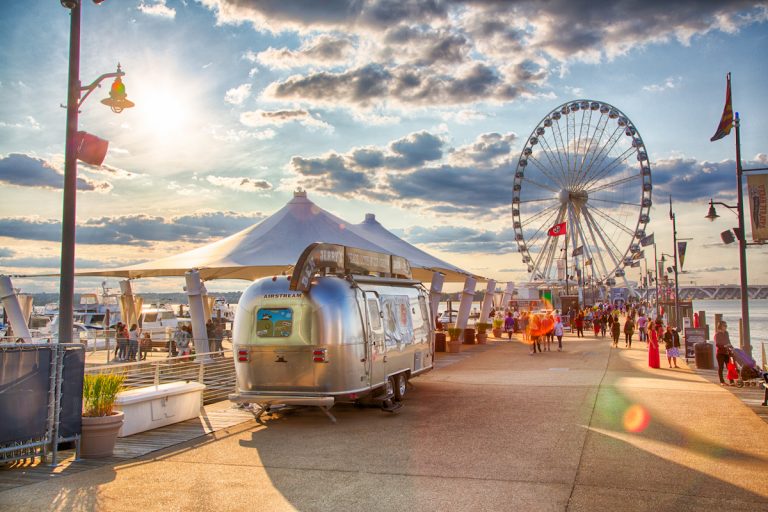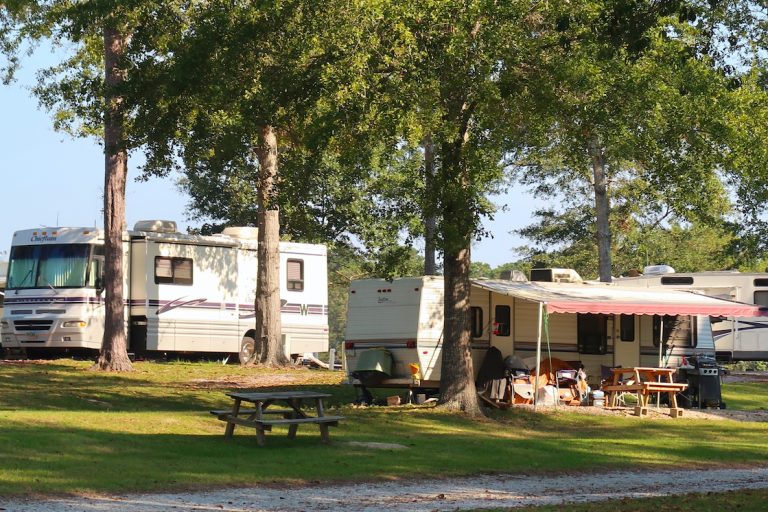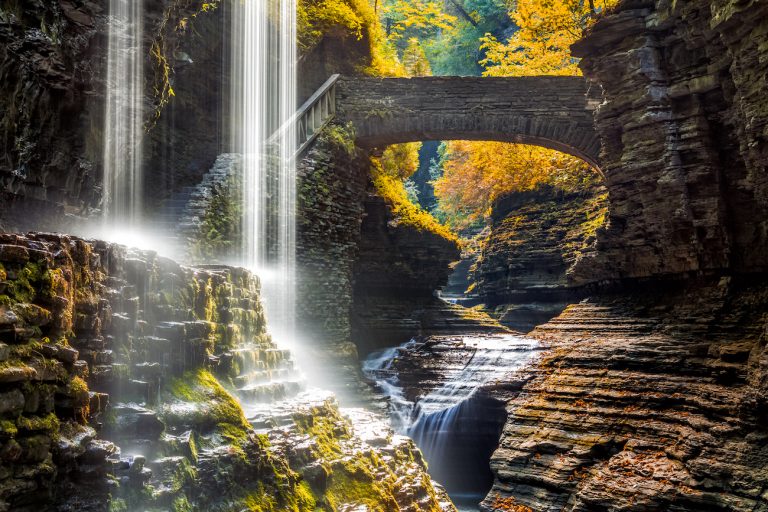“National parks are the best idea we ever had. Absolutely American, absolutely democratic, they reflect us at our best rather than our worst.” — Wallace Stegner, 1983
There are over 417 areas in the National Parks System, covering more than 131,000 square miles, an astonishing array of ecosystems and millions of years of history. It’s been said that national parks are the best idea America ever had. And after a few days in a place like the Grand Canyon or a hike through the otherworldly landscapes of Bryce Canyon, it’s hard to disagree.
National Park Week runs from April 21st to April 29th this year. To celebrate, the National Parks Service has declared the 21st as a “fee-free” day for all 417 parks. Many parks are free to enter all year-round, but 118 waive their fees on select days only. It’s a great opportunity to visit an old favorite or explore a new park that’s been on your list.
We’ve put together a list of 50 incredible national parks that deserve a spot on your itinerary this April and beyond. Check out the awesome map we made, too! (All of the numbers on this list correspond to a park on the map.)
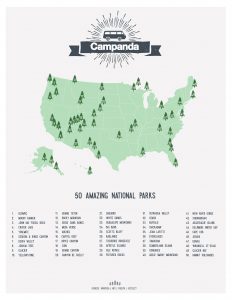
Keep reading to discover your next destination, whether you’re a backcountry camper, an RV owner or are planning to rent an RV on Campanda:
Contents (Click To Jump Ahead)- National Parks On The West Coast
- National Parks In The Rockies
- National Parks In The Southwest
- National Parks In The Midwest
- National Parks In The South
- National Parks In The Northeast
- National Parks In Alaska & Hawaii
- Different Types Of National Parks
Note: Be sure to consult the NPS website for further information before planning your trip. Unless otherwise stated, the RV camping information below refers to NPS-operated campgrounds. You can visit Recreation.gov to make reservations where available.
National Parks On The West Coast
1. Olympic National Park | Washington
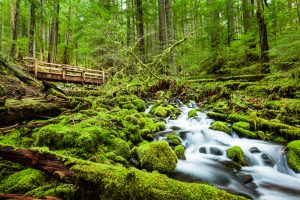


Nearly a million acres of stunning diversity and natural beauty make this sprawling park in northwestern Washington a must-visit for nature lovers.
Olympic National Park contains several distinct ecosystems, including rugged coastline, glacier-capped mountain peaks and lush temperate rainforests.
RV Camping In Olympic National Park:
Mostly first-come, first-served. Most campgrounds have sites for RVs under 21 feet; limited spaces for RVs up to 35 feet.
2. Mount Rainier National Park | Washington
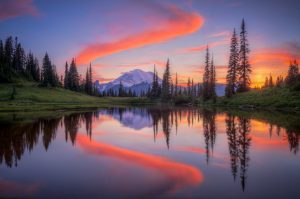


It’s no surprise that Mount Rainier was one of the first national parks created. Reaching over 14,000 feet above sea level, the mountain (which is actually an active volcano) is an iconic part of the landscape.
Glaciated peaks, rivers, wildflower meadows, ancient forests and abundant wildlife await visitors.
RV Camping In Mount Rainier National Park:
Reservations available at some sites during season dates. RV limitations vary by campground, from 27 to 35 feet for motorhomes and 18 to 27 feet for trailers.
3. John Day Fossil Beds National Monument | Oregon
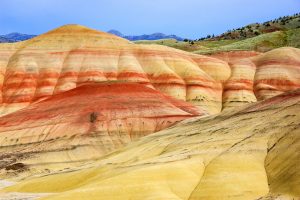


Over 40 million years of plant and animal evolution are preserved in the colorful rock formations of the John Day Fossil Beds.
There are three geographically distinct areas of the monument with rivers, semi-desert shrublands and towering cliffs. But the rainbow-colored Painted Hills are real stars of the show and the main draw for many visitors.
RV Camping In John Day Fossil Beds National Monument:
Camping of any kind is not permitted within the boundaries of the monument. But there are plenty of nearby campgrounds, some with accommodations for RVs up to 72 feet!
4. Crater Lake National Park | Oregon
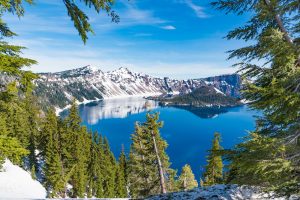


Crater Lake is simply awe-inspiring. Situated in the caldera of a destroyed volcano, it’s the deepest lake in the United States and is remarkably pristine.
The deep blue water is beautiful all year round, but is especially dramatic against the snow.
RV Camping In Crater Lake National Park:
There is an RV-friendly campground within the park that takes reservations (except in June) for RVs up to 50 feet. Dispersed camping (aka boondocking) is permitted with certain restrictions.
5. Yosemite National Park | California
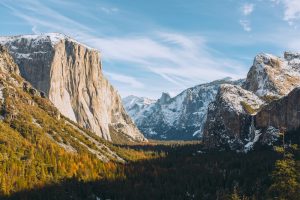


Sequoias, waterfalls and towering granite cliffs — Yosemite is home to some of America’s most iconic and recognizable landscapes.
Located in the Sierra Nevada of California, Yosemite is just over three hours from San Francisco, making it ideal for weekend warriors looking for a dose of fresh air and inspiring wilderness.
RV Camping In Yosemite National Park:
There are 10 campgrounds in the park that offer RV camping for vehicles and trailers of varying size (up to 40 feet for motorhomes and 35 feet for trailers, though these spaces are limited). Reservations are recommended.
6. Sequoia & Kings Canyon National Parks | California
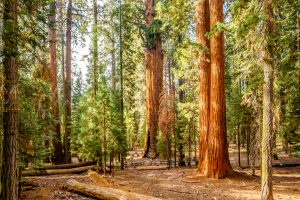


These two adjacent parks have been managed jointly since the 1940s and together are home to mountains, caves deep canyons, diverse wildlife and some of the world’s tallest trees. In fact, the largest tree in the world — named General Sherman — resides within Sequoia National Park and is estimated to be over 2,000 years old.
RV Camping In Sequoia & Kings Canyon National Parks:
There are 14 campgrounds within the parks, offering a mix of reservation-based and first-come, first-served accommodations. There are no RV hook-ups in the parks and due to road conditions, vehicles over 22 feet are not allowed on certain routes.
7. Death Valley National Park | California & Nevada
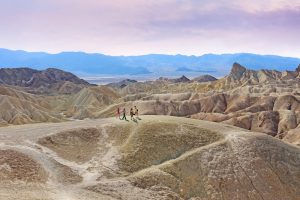


The largest national park outside of Alaska, Death Valley is a 3.3-million-acre land of extremes. Within the park’s boundaries lie rolling badlands, mountains, salt flats, sand dunes and Badwater Basin — the lowest point in United States and the second-lowest point in the Western Hemisphere.
Despite its name, the park supports a diverse range of desert wildlife.
RV Camping In Death Valley National Park:
The are a number campgrounds within the parks offering a mix of reservation-based and first-come, first-served accommodations. Sites with hook-ups are extremely limited, so book ahead. Some campgrounds do not accept RVs over 25 feet.
8. Joshua Tree National Park | California
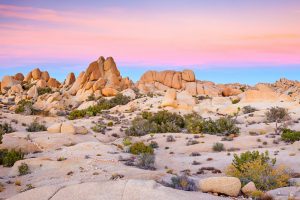


Named for the trees native to the park, Joshua Tree preserves two distinct desert ecosystems — the Mojave and Colorado.
Visitors will find unique landscapes, diverse wildlife and incredible stargazing. Hiking, birdwatching, slack-lining and horseback riding are among the activities available in the park.
RV Camping In Joshua Tree National Park:
There are both first-come, first-served and reserved campsites available. Due to the park’s proximity to Los Angeles and San Diego, campgrounds can fill up quickly on weekends, so booking ahead is recommended. Most campgrounds can accommodate RVs up to 35 feet.
National Parks In The Rockies
9. Glacier National Park | Montana
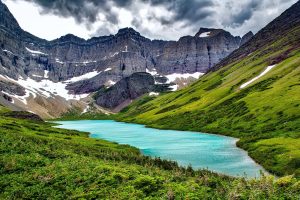


Glacier National Park lies along the Canadian border and is home to a remarkably well-preserved ecosystem that includes grizzlies, moose, mountain goats and wolverines.
Glacier is the headwater for waters that flow through vast parts of the United States, earning it the title of “Crown of the Continent Ecosystem.”
RV Camping In Glacier National Park:
Camping is only permitted in designated campsites, most of which are first-come, first-served. Note that hook-ups are not available and spaces for RVs over 21 feet are extremely limited.
10. Yellowstone National Park | Idaho, Montana & Wyoming
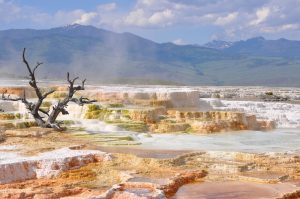


The first national park in the United States (and by most accounts, the world) is a nature lover’s paradise.
The park welcomes millions of visitors each year who come to experience the park’s famous geysers, forests, waterfalls and wildlife.
RV Camping In Yellowstone National Park:
There are over 2,000 campsites in the park, spread across 12 campgrounds. Most campgrounds offer RV accommodations, with size restrictions varying from 25 to 50 feet.
11. Grand Teton National Park | Wyoming
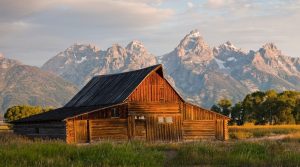


Lying just south of Yellowstone, Grand Teton is a park made for outdoor adventurers, whether you’re looking to go kayaking, fishing or wildlife watching.
The alpine terrain makes for fantastic hiking and there are over two hundred miles of trails to explore.
RV Camping In Grand Teton National Park:
There are five RV-friendly campgrounds in Grand Teton, including two designated RV villages with full hook-ups. Vehicle length restrictions vary from 30 to 45 feet. Reservations are recommended.
12. Rocky Mountain National Park | Colorado
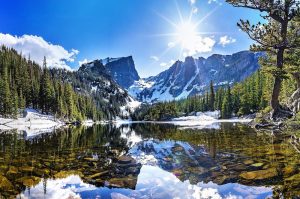


Less than two hours from Denver, Rocky Mountain is home to 415 square miles of beautiful alpine wilderness.
Activities range from snowshoeing and sledding in the winter, to hiking and wildlife spotting in the summer.
RV Camping In Rocky Mountain National Park:
There are four campgrounds that accept RVs (no hook-ups) with length limits from 30 to 40 feet.
13. Great Sand Dunes National Park & Preserve | Colorado
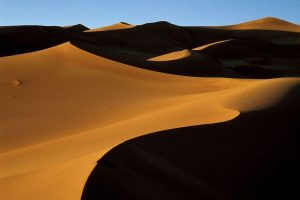


Great Sand Dunes is home to the tallest sand dunes in North America, as well as a diverse landscape that includes alpine lakes, forests and wetlands.
The snow-capped Rocky Mountains loom in the background, a stark contrast to the park’s desert-like dunes.
RV Camping In Great Sand Dunes Park:
There are spaces for RVs up to 35 feet. During the busy season (May through September), sites must be reserved at least four days in advance. There are no hook-ups at the NPS site, though some area campgrounds offer more amenities.
14. Mesa Verde National Park | Colorado
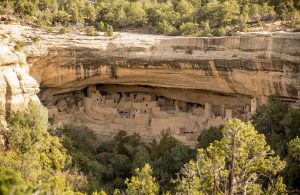


Mesa Verde, which means “green table” in Spanish, preserves nearly 5,000 archeological sites, making it the largest archeological preserve in the United States.
The lands that now lie within the park were inhabited for thousands of years before the arrival of European settlers; the layers of history that are preserved within the park’s boundaries are sure to fascinate history buffs and children alike.
RV Camping In Mesa Verde National Park:
There is only one campground within the park — but with 267 sites, it rarely fills up. Both dry camping and full hook-up sites are available, though the latter are limited and require reservations. RVs must be under 46 feet long.
15. Arches National Park | Utah
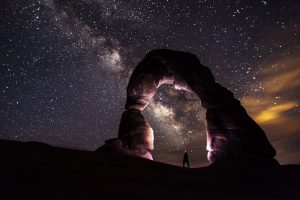


Located just north of Moab, Arches is home to an otherworldly landscape of over 2,000 sandstone arches, as well as fascinating geological features like naturally eroded hoodoos, gargoyles and balanced rocks.
RV Camping In Arches National Park:
Camping is permitted only in designated sites. Spaces fill up quickly during the busy season (March through October) and are usually booked months ahead of time. There are no hook-ups in the park and all RVs must be under 40 feet.
16. Capitol Reef National Park | Utah
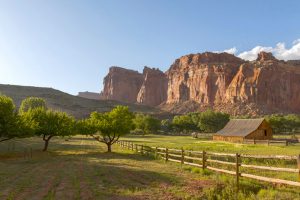


Capitol Reef lies in the very heart of red rock country.
The park preserves towering monoliths, ridges and buttes, as well as surprisingly green and fertile valleys that support historic orchards with over 2,700 fruit trees.
RV Camping In Capitol Reef National Park:
The Fruita campground has 64 developed RV sites that can accommodate virtually any RV length (up to 52 feet). There are also 11 remote undeveloped campsites deeper in the park that operate on a first-come, first-served basis.
17. Bryce Canyon National Park | Utah
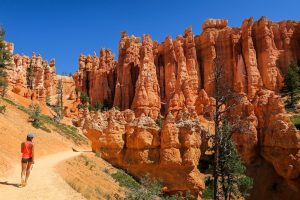


Bryce Canyon is a truly unique and awe-inspiring place that has to be seen to be believed.
Whether you go for a hike among the hoodoos, snowshoe along the rim in winter or simply take in the views with a scenic drive through the park, you’re sure to be wowwed by the landscape.
RV Camping In Bryce Canyon National Park:
There are two campgrounds in the park. During the busy season (April to October), RV parking is restricted to certain areas and vehicles are limited to under 25 feet.
18. Zion National Park | Utah
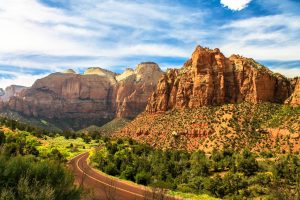


Steep red cliffs, forest trails, waterfalls, riverside hikes, hanging gardens — Zion is filled with inspiring landscapes and natural diversity.
Follow in the footsteps of ancient peoples and pioneers as you explore places like Weeping Rock, the Temple of Sinawava, Emerald Pools and Angels Landing.
RV Camping In Zion National Park:
There are three campgrounds within the park. There are both first-come, first-served and reservable sites available. Many sites have height restrictions of 12’5″.
National Parks In The Southwest
19. Grand Canyon National Park | Arizona
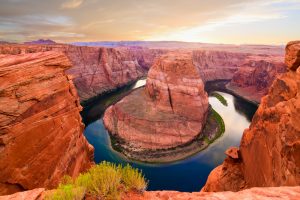


The Grand Canyon is famous for a reason. Up to 18 miles wide, 277 river miles long and up to a mile deep, it’s overwhelming in its scale and beauty.
Go rafting through the rapids of the Colorado River, walk 4,000 feet above the canyon floor on the glass Skywalk or go hiking along the rim for unparalleled views. However you experience the Grand Canyon, it’s sure to awe and inspire.
RV Camping In Grand Canyon National Park:
Two of the three NPS campgrounds accept reservations. None of these three campgrounds have hook-ups, but there is a privately operated RV park within Grand Canyon Village that does and can accommodate vehicles up to 50 feet long.
20. Canyon De Chelly National Monument | Arizona
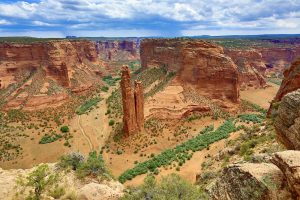


This national monument lies within the boundaries of the Navajo Nation. Managed in cooperation with the Navajo, the park protects one of the longest continuously inhabited landscapes in North America.
Its long history, archeological ruins and distinctive geologic structures make Canyon de Chelly a unique and inspiring experience.
RV Camping In Canyon De Chelly National Monument:
The Navajo Nation manages an RV-friendly park within the monument that accepts RVs up to 40 feet on a first-come, first-served basis. Note that there are no hook-ups and limited facilities.
21. Saguaro National Park | Arizona
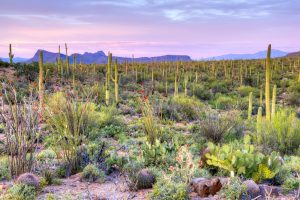


When you think of cacti, you probably picture saguaro. Found only in a small part of the country, the giant saguaro is an iconic symbol of the American west.
Made up of two parts on either side of Tucson, Saguaro National Park preserves Rincon Mountain and Sonoran Desert landscapes, unique wildlife and (of course) the large, tree-like saguaro cacti.
RV Camping In Saguaro National Park:
RV parking is not permitted within the boundaries of the park.
22. White Sands National Monument | New Mexico
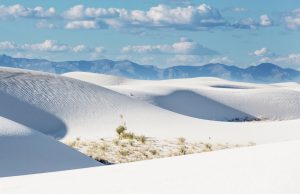


White Sands is a true natural wonder. Located in the northern Chihuahuan Desert, it is home to the world’s largest gypsum sand dunes.
Popular activities include horseback riding, picnicking and sand sledding!
RV Camping In White Sands National Monument:
There is no RV camping within the monument, but there are many public and private campgrounds within an hour’s drive.
23. Guadalupe Mountains National Park | Texas
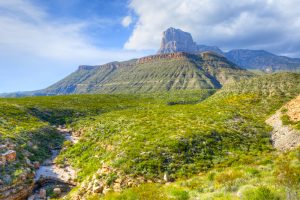


Located in the far-west corner of Texas, Guadalupe Mountains is home to the highest peaks in the state, as well as excellent stargazing and wildlife spotting.
It’s also one of the lesser-visited parks in the National Parks System, meaning you’re likely to have rugged hiking and horseback riding trails all to yourself!
Bonus: Guadalupe Mountains is just 30 miles from Carlsbad Caverns National Park in New Mexico, which is home to more than 119 fascinating caves. It’s like a national park two-for-one deal!
RV Camping In Guadalupe Mountains National Park:
There are two campgrounds within the park that offer RV accommodations on a first-come, first-served basis. There are no hook-ups or dump stations.
24. Big Bend National Park | Texas
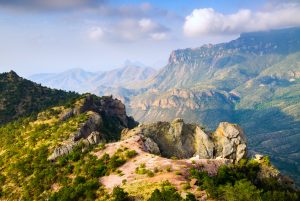


Everything’s bigger in Texas! Big Bend boasts towering limestone cliffs, enormous night skies and, of course, the Rio Grande (“Big River” in Spanish). It’s one of the largest — and least visited! — national parks in the lower 48 states.
The park contains the largest protected area of the Chihuahuan Desert in the country. Despite the harsh climate, Big Bend is home to a diverse array of plant and animal life — almost 2,000 species (plus about 3,600 species of insects). It’s night skies are internationally recognized for their darkness — on many nights you can even see the Milky Way.
RV Camping In Big Bend National Park:
Big Bend is quite RV-friendly. There are plenty of sites with full hook-ups and campgrounds offer a mix of reservation-based and first-come, first-served sites. Some campsites are not recommended for RVs over 24 feet due to road conditions.
National Parks In The Midwest
25. Scotts Bluff National Monument | Nebraska
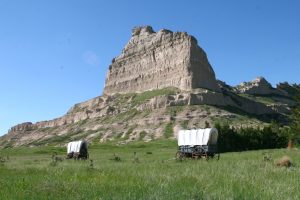


Scotts Bluff towers 800 feet above the plains, and is most famous as a landmark for the emigrants who traveled west along the Oregon and Mormon Trails.
Long before it helped European travelers navigate across the plains, the rock formation was known as Me-a-pa-te by local Native Americans — meaning “the hill that is hard to go around.”
RV Camping In Scotts Bluff National Monument:
There is no camping within the monument boundaries. However, there are several RV campgrounds nearby; Robidoux RV Park offers 42 RV pads with hook-ups and views of the monument.
26. Badlands National Park | South Dakota
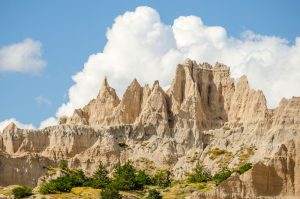


There’s nothing bad about these lands! (Sorry, we couldn’t help ourselves.) Sharply eroded pinnacles, spites and buttes rise above the one of the largest undisturbed grass prairies in the United States.
Badlands is home a range of wildlife — both ancient and modern. The park contains one of the world’s riches fossil beds, which preserves the remains of animals like sabertooth cats. Today, it’s home to animals like bison, porcupines, coyotes and prairie dogs.
RV Camping In Badlands National Park:
There are two campgrounds within the park. One offers developed camping (some sites with hook-ups) and accepts reservations. The other is more remote (bison often wander through) and offers free primitive camping on a first-come, first-served basis.
27. Theodore Roosevelt National Park | North Dakota
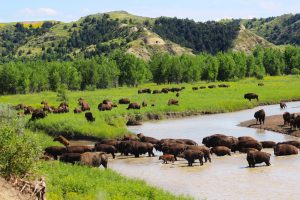


It may seem contradictory, but U.S. President Theodore Roosevelt was an avid hunter of the very bison that his eponymous park now protects. The rugged landscapes and abundant wildlife of North Dakota’s badlands inspired Roosevelt as a young man. When he became president, he made lasting contributions to the conservation of America’s natural beauty and resources.
Visitors to the park can learn all about the Roosevelt connection, or simply enjoy the park’s sprawling badlands and rich wildlife — including feral horses, bobcats, coyote and bison.
RV Camping In Theodore Roosevelt National Park:
There are three campgrounds within the park that can accommodate RVs of various sizes (no hook-ups). Reservations required for some sites, others first-come, first-served.
28. Apostle Islands National Lakeshore | Wisconsin
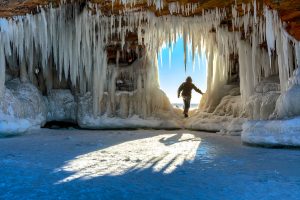


Apostle Islands consists of 21 islands and nearly 70,000 acres of shoreline along Lake Superior.
Popular with kayakers, hikers and lighthouse fanatics alike, the national park attracts visitors year-round. In warmer months, you can kayak from island to island or hike along 50 miles of mainland trails. And when winter conditions are just right, it is possible to tread across the lake to view the spectacular ice caves that form along the lakeshore.
RV Camping Along Apostle Islands National Lakeshore:
The NPS campgrounds are for tenters only, but there are plenty of RV-friendly campgrounds around the park. Facilities and policies vary.
29. Isle Royale National Park | Michigan
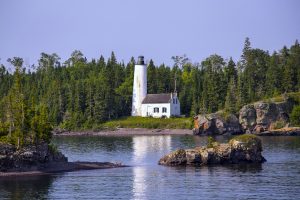


Accessible by boat or seaplane, Isle Royale is known for its rugged shores, northwoods forest and wildlife. Thanks to its remote location in Lake Superior, it’s also one of the least-visited national parks.
The park is not RV-friendly (or even car-friendly, for that matter), but we just had to include it. Few corners of the country remain so unspoiled and uncrowded — it’s a must-visit for outdoor enthusiasts and nature-lovers looking to really get away from it all.
RV Camping In Isle Royale National Park:
Isle Royale is a car-free wilderness. You’ll have to leave your camper or trailer onshore to visit.
30. Pictured Rocks National Lakeshore | Michigan
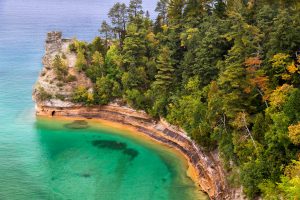


Located on the south shore of Lake Superior, Pictured Rocks gets its name from its multicolored sandstone cliffs and rock formations.
Visitors will find beaches, sand dunes, waterfalls and scenic forest hiking trails, as well as plenty of outdoor activities all year round.
RV Camping Along Pictured Rocks National Lakeshore:
Campgrounds are strictly first-come, first-served and arriving early is recommended. RVs over 36 feet and car/trailer combos over 42 feet are not advised.
31. Cuyahoga Valley National Park | Ohio
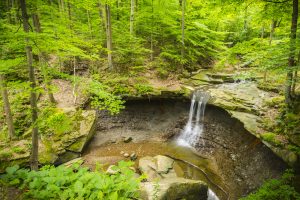


Just a short distance from Akron and Cleveland, Cuyahoga Valley is Ohio’s only national park. It preserves the lush rural landscape around the Cuyahoga River.
Forests, rolling hills and farmland support wildlife like raccoons, foxes, beavers, falcons and great blue herons.
RV Camping In Cuyahoga Valley National Park:
Overnight RV parking is not permitted in the park. RVs can be parked at designated areas during the day.
32. Ozark National Scenic Riverways | Missouri
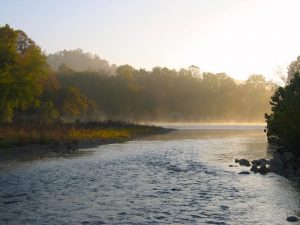


This national park was established to protect a river system — the Current and Jacks Fork Rivers. Both spring-fed rivers are popular for canoeing, swimming and fishing.
There are also hundreds of freshwater springs, caves, historic sites and hiking trails throughout the park,.
RV Camping Along Ozark National Scenic Riversways:
There are tons of camping options in the park, ranging from primitive backcountry camping to developed campgrounds with full hookups. Both reservable and first-come, first-served sites are available.
National Parks In The South
33. Buffalo National River | Arkansas
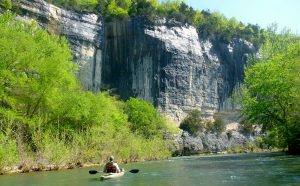


The Buffalo River flows uninterrupted through this national park for 135 miles; it’s one of the last remaining undammed rivers in the contiguous United States.
In addition to river-based activities like canoeing, visitors will find hiking and horseback riding trails, historic homesteads and starry skies.
RV Camping Along Buffalo National River:
There are a number of campgrounds throughout the park offering the full range of amenities from primitive to full hook-up. Camping is permitted in designated spots only.
34. Chickasaw National Recreation Area | Oklahoma
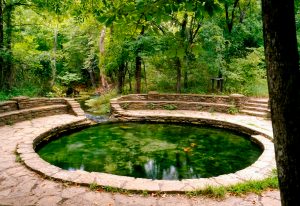


Located at the foot of Oklahoma’s Arbuckle Mountains, Chickasaw is a water lover’s paradise. Known for its mineral springs, streams and lakes, the park is perfect for swimmers, water-skiers, boaters, anglers — and just about anyone looking to cool off on a hot summer’s day.
RV Camping In Chickasaw National Recreation Area:
There are six public campgrounds within the park, including some with full hook-ups and spaces for RVs up to 40 feet. Reservation policies and recommendations vary.
35. Jean Lafitte National Historical Park And Preserve | Louisiana
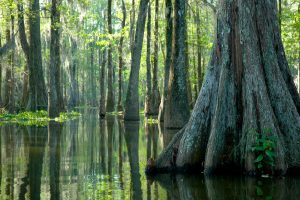


Did you know there was a national park just outside New Orleans? Jean Lafitte, named after the famous French pirate who helped defend New Orleans against the British in 1815, is comprised of six sites that preserve the region’s unique natural and cultural landscape.
Its proximity to major cities makes it a great day trip, whether you’re looking to canoe through Louisiana’s famous bayous and swamplands, learn about Cajun culture or visit the site of the Battle of New Orleans.
RV Camping In Jean Lafitte National Historical Park:
There is no RV camping within the park’s boundaries, but you can find camping at nearby state parks as well as private campgrounds.
36. Everglades National Park | Florida
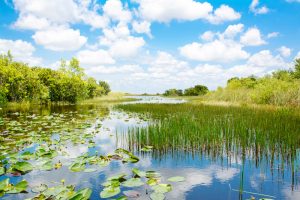


The Everglades isn’t just the largest wilderness east of the Mississippi — it’s also a World Heritage Site, International Biosphere Reserve and Wetland of International Importance.
So what makes it so special? As the largest tropical wilderness in the country, it preserves a huge network of wetlands and forests that form the basis of a rich but fragile ecosystem. There are nine distinct ecosystems within the park and dozens of endangered species call the Everglades home.
Popular activities include canoeing, hiking, boating, biking and bird-watching.
RV Camping In Everglades National Park:
There are two drive-in campgrounds in the park that can accommodate a limited number of RVs (no hook-ups). During the busy winter months, reservations are highly recommended.
37. Timucuan Ecological & Historical Preserve | Florida
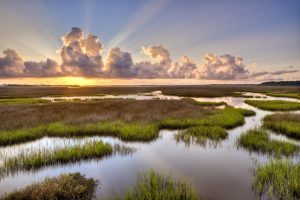


Photo credit: Will Dickey
The Florida national park that you never knew existed, Timucuan is a historically and ecologically rich 42,000-acre preserve that protects thousands of years of human history, plus one of the last unspoiled coastal wetlands on the East Coast.
In addition to its natural beauty, Timucuan includes the remains of a short-lived sixteenth-century French colony, a nineteenth-century plantation and a formerly segregated beach for African Americans — all fascinating and sobering reminders of a complicated national history.
RV Camping In Timucuan Ecological & Historical Preserve:
There are no NPS-operated campgrounds in the park. However, there are two state and local campgrounds located within the boundaries of the preserve with varying accommodations for RVs.
38. Cumberland Island National Seashore | Georgia
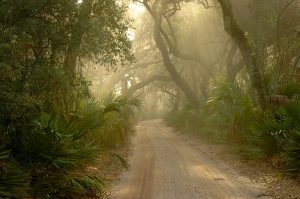


Georgia’s largest barrier island is home to pristine forests, marshes and 18 miles of undeveloped beaches where feral horses roam freely and loggerhead turtles make their nests.
In addition to Cumberland Island’s natural beauty — think ancient oak trees draped in Spanish moss and windswept white beaches — visitors will also find the impressive ruins of two Gilded Age mansions.
RV Camping Along Cumberland Island National Seashore:
The park itself is undeveloped and only accessible by the NPS ferry system. However, there are a number of RV campgrounds on the mainland close to the ferry landing.
39. Congaree National Park | South Carolina
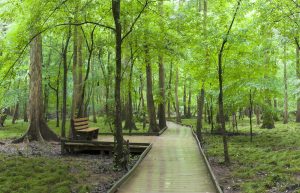


Congaree preserves the largest area of old growth bottomland hardwood forest — forests that grow in swampy floodplains — on the East Coast.
The forest supports a diverse ecosystem, including otters, bobcats, armadillos, deer and some of the tallest trees in the eastern United States.
RV Camping In Congaree National Park:
RV camping is not permitted in the park, but there are several RV campgrounds within driving distance. Amenities and regulations vary.
40. Great Smoky Mountains National Park | Tennessee-North Carolina
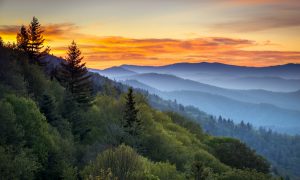


Did you know that Great Smoky Mountains is America’s most-visited national park?
Straddling the border between North Carolina and Tennessee, this 816-square-mile park has some of the most iconic mountain views in the country — not to mention abundant wildlife, spectacular hiking trails and a rich history.
RV Camping In Great Smoky Mountains National Park:
There are nine RV-friendly NPS campgrounds within the park. Maximum length limits vary from under 12 feet to no limit at all. Some campgrounds require reservations, while others are first-come, first served.
41. New River Gorge National River | West Virginia
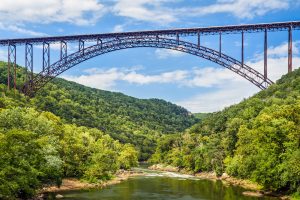


The New River is actually one of the oldest rivers on the continent (what’s in a name, right?).
This scenic national park protects over 70,000 acres of land along the course of this ancient river, which is renowned for some of the best whitewater rafting in the country and its truly impressive steel bridge.
RV Camping Along New River Gorge National River:
All camping sites in the park are first-come, first-served. Camping in the park is primitive — no water or hook-ups — so come prepared.
42. Shenandoah National Park | Virginia
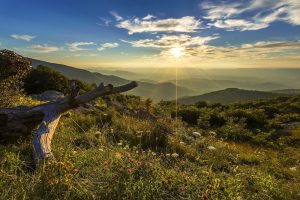


Only 75 miles from Washington, D.C., Shenandoah encompasses nearly 200,000 acres of wilderness along a long and narrow stretch of the Blue Ridge Mountains.
Famous for its scenic 105-mile Skyline Drive, the park is also to waterfalls, wildlife and quiet hollows.
RV Camping In Shenandoah National Park:
Campgrounds are seasonal, opening in spring and closing in autumn. There are four campgrounds in the park with RV sites, though there are no hook-ups. Reservations are highly recommended in the high season.
National Parks In The Northeast
43. Assateague Island National Seashore | Maryland-Virginia
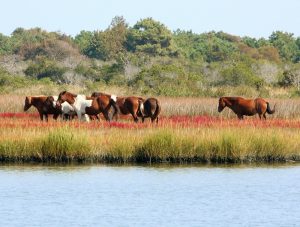


A rugged, windswept wilderness where horses roam freely and an ocean storm can reshape the land in a matter of minutes, Assateague Island is one of the East Coast’s best-preserved coastal habitats.
The land here is constantly changing as the barrier island is buffeted by Atlantic wind and waves. Only three to five hours from some of the East Coast’s largest cities, this pristine 37-mile island feels like a world away.
RV Camping Along Assateague Island National Seashore:
There are two drive-in campgrounds within the park that offer RV camping. Sites have a picnic table and fire ring, but no hookups. Reservations are required.
44. Delaware Water Gap National Recreation Area | New Jersey & Pennsylvania
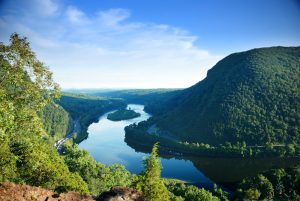


No, this park isn’t in Delaware. It’s located along the Delaware River on the New Jersey/Pennsylvania border, just a short drive from New York City.
Just about every outdoor activity you could want is possible in this recreation area — including fishing, canoeing, cross-country skiing and horseback riding.
More than 100 miles of hiking trails, — including 27 miles of the Appalachian Trail — and 100 miles of scenic roadways wind through the park, making it a great choice for every fitness level.
RV Camping In Delaware Water Gap National Recreation Area:
There are two developed campgrounds in the park with RV sites. These campgrounds are state-run or privately owned in compliance with NPS regulations. Policies and accommodations vary.
45. Cape Cod National Seashore | Massachusetts
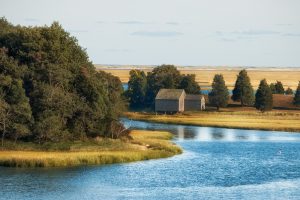


A favorite summer playground for East Coasters, Cape Cod is also home to 40 miles of pristine sandy beaches, salt marshes, ponds and pine barrens — all of which support rich coastal ecosystems.
Cape Cod is ideal for families and couples looking for a relaxed getaway exploring cranberry bogs, seaside biking and hiking trails, historic buildings and (of course) the seashore’s numerous sandy swimming beaches.
RV Camping Along Cape Cod National Seashore:
There are no NPS-operated campgrounds within the park, but RV camping (up to 35 feet) is permitted at the nearby Nickerson State Park.
46. Acadia National Park | Maine
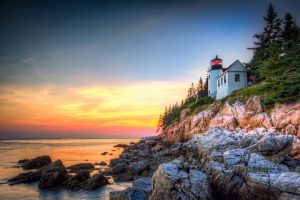


Acadia is the oldest national park east of the Mississippi and was visited by over 3.5 million people in 2017 alone.
Visitors flock to experience Acadia’s rocky headlands, woodlands and famous shoreline, which includes several small Atlantic islands.
The park is rich in natural diversity — wildlife includes moose, bobcats, black bears and many marine species — and is popular with hikers, boaters and beachcombers alike.
RV Camping In Acadia National Park:
There are a number of campgrounds, both NPS and private, that offer RV accommodations with varying restrictions. Campsites fill up quickly, so recommendations are highly recommended.
National Parks In Alaska & Hawaii
47. Denali National Park & Preserve | Alaska
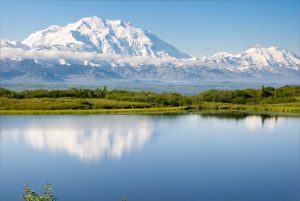


A single, partially paved road stretches 91 miles through six million acres of this Alaskan wilderness.
Home to tundra, glaciers, boreal forests and the tallest mountain peak in North America, Denali is an unspoiled arctic wilderness that beckons mountaineers, wildlife watchers and all manner of outdoor adventurers.
RV Camping In Denali National Park:
RV camping is only permitted in designated campgrounds. There are three campgrounds that accept RVs under 40 feet (no hook-ups), two of which are only open in summer months.
48. Wrangell-St Elias National Park & Preserve | Alaska
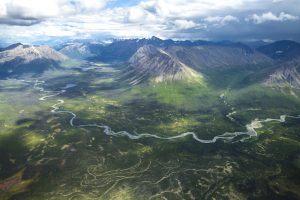


Almost six times the size of Yellowstone, the vastness of Wrangell-St Elias has to be seen to be believed.
The park’s 13.2 million acres are home to nine of the 16 highest peaks in the country, some of the world’s largest glaciers and habitats that range from temperate rainforest to tundra to coastal waters.
RV Camping In Wrangell-St Elias National Park:
There is a single NPS campground in the park, as well as a number of privately owned campgrounds with varying restrictions and amenities. Due to the vastness of the park and limited facilities, always plan ahead.
49. Glacier Bay National Park & Preserve | Alaska
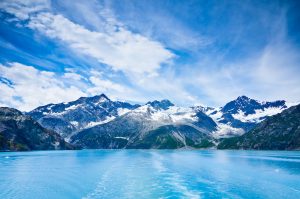


No roads run through Glacier Bay, but that didn’t stop over 500,000 people from making the boat or plane journey to this vast icy wilderness last year.
Located west of Juneau in southeastern Alaska, Glacier Bay is known for its glaciers, snow-capped mountains and enigmatic wildlife — like wolves, bears, caribou and humpback whales, among others.
RV Camping In Glacier Bay National Park:
The park is inaccessible to RVs, but there is a free walk-in campground for tent camping.
50. Hawai’i Volcanoes National Park | Hawaii
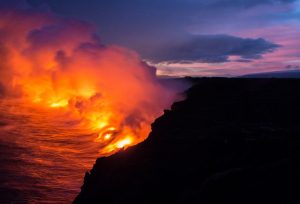


Fire and water meet in Hawai’i Volcanoes. This unique national park includes two active volcanoes — Kilauea, one of the world’s most active, and Mauna Loa, the largest volcano on Earth.
The park encompasses a range of habitats, including lush tropical rainforests and barren desert. Popular activities include hiking, biking, driving tours and, of course, lava viewing.
RV Camping In Hawai’i Volcanoes National Park:
There are two drive-in campgrounds operated by the park that can accommodate small RVs and campervans. No hook-ups are available.
What’s the difference between a National Park and a National Monument?
There are 19 main categories of NPS designations (plus 11 “other” sites) that include everything from national monuments to national battlefields to national seashores.
Some designations are self-explanatory while others are a little more complicated. But at the end of the day, they’re all national parks. To make things a little less confusing, we’ve broken down the different kinds of national parks that are included in this list:
- National Parks are typically vast areas of land protected for their scenic, inspirational, educational and/or recreational value. They are given the greatest level of protection with the aim of preserving their resources for the enjoyment of future generations.
- National Monuments are usually smaller than national parks and are intended to protect sites of historical, cultural and/or scientific interest. They are only required to have one item of interest (unlike national parks, which must have a variety of attractions).
- National Preserves protect certain resources. Activities like hunting or mining may be allowed if they do not “jeopardize the natural values” of the park.
- National Seashores & National Lakeshores preserve natural and scenic resources along shoreline areas and offshore islands while also providing water-based recreation.
- National Rivers & National Scenic Riverways protect rivers and their immediate environments. These areas also provide water-based and outdoor recreation.
- National Historical Parks protect areas of significant historical and cultural value. They are typically larger and more diverse than other national historic sites.
- National Recreation Areas were originally given to areas surrounding reservoirs (like Lake Mead), but now include a variety of areas set aside for recreational use like kayaking, hiking, fishing and camping.
Psst! Did you miss out on April’s fee-free day? Never fear — there are two more coming up this year: September 22 (Public Lands Day) and November 11 (Veterans Day) are also fee-free in 2018.
Feeling inspired? Rent an RV on Campanda and start discovering our country’s amazing natural diversity and landscapes for yourself!
Have an RV sitting in the driveway? Help fellow outdoor enthusiasts explore America’s national parks — rent your RV on Campanda! You’ll earn extra cash for your next adventure, too!
